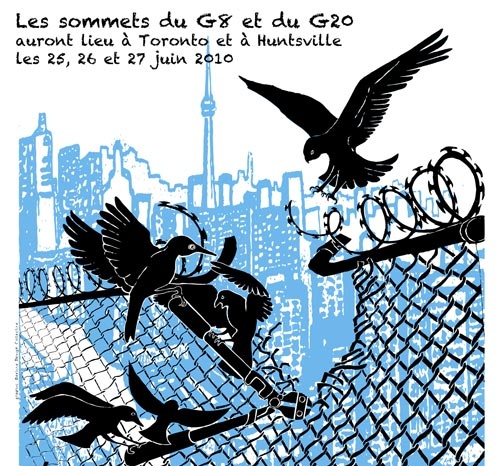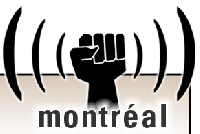 |
 |
 |
 |
 |
 |
|
 |
 |
 |
 |
 |
 |
 |
Régions du Québec |  |
 |
 |
|
 |
 |
|
 |
 |
|
 |
 |
 |
 |
 |
 |
Rubriques (sujets) |  |
 |
 |
|
 |
 |
|
 |
|
 |
 |
 |
Building the media bridge: Uniting youth in divided Yugoslavia
What do you do to ease racial tensions stemming from a war in which neighbours killed neighbours and friends turned on friends? In Kosovo, a province of Serbia still healing from ethnic bloodshed, non-governmental organizations are using community-based media to bring youth from both sides of the conflict together.
What do you do to ease racial tensions stemming from a war in which neighbours killed neighbours and friends turned on friends? In Kosovo, a former province of Serbia still healing from ethnic bloodshed, non-governmental organizations are using community-based media to bring youth from both sides of the conflict together.
The fighting in Kosovo was largely between Serbian Orthodox Christians and ethnic Albanians, most of whom are Muslim. During the war, over 2,000 Albanian civilians were killed by the Serb-controlled Yugoslavian army, and more than 800,000 were forcibly deported.
After the war ended in 1999 and NATO peacekeepers moved in, the refugees began to return. But the ethnic lines had been drawn, and nowhere more so than in a place once known as the most dangerous in Europe and considered an epicentre of Kosovo's problems.
The town of Mitrovica lies on the river Ibis in the North of Kosovo. Before the war, people from diverse ethnic backgrounds lived together in all of Mitrovica's neighbourhoods. But since the war, the river clearly divides the town—Albanians on one side, Serbs on the other.
Bridging the Divide
For almost a decade, Caritas Kosovo—a Catholic charity that promotes peace and equality—has been working throughout the province to help poor families affected by the war. Last January, I interviewed Gezim Plakolli, a native Kosovar working with Caritas in Mitrovica. Gezim deals with projects that facilitate conflict resolution and promote non-violent dialogue between groups of young people from the Albanian and Serbian communities.
"All these projects [involve] big issues," Gezim says. "They take a long time. We spent six months one year, just to bring those two groups together."
Youth Centre Success
Though his work with the older generation has been limited (many local elders continue to harbour racist sentiments), all of Gezim's endeavours with young people have so far proven successful.
The pride of these projects came in 2003, when Caritas opened up a youth centre that organizes special workshops. The first such workshop was conducted by a journalism teacher, paid by Gezim, to give classes to 30 people (15 Albanian and 15 Serbian) on how to produce media. After the first six months, these new journalists began training other interested young adults.
Today the process continues as youth, in their own right, pass on their tools for change. Current workshops train 30 Serbs and 30 Albanians together in various media.
"We have an Internet lab, we have a radio workshop, we have a video workshop and we have a black-and-white photo workshop," says Gezim.
The youth centre now also publishes a monthly magazine, written in both Serbian and Albanian, and distributed for free on both sides of Mitrovica.
"You can read Serbian in the South, where [the population] is majority Albanian. And you can also read Albanian in the North, where it is majority Serbian. So this is, for me, a very big success."
Maintaining equal representation at the magazine is a key principle. "We have two producers; there is one Albanian, and one Serbian," explains Gezim. "We have eight journalists; four Albanians, four Serbians."
The last page of each magazine attempts to change local prejudice by publishing questions that youth from both sides of the city send in, which are directed specifically at members of the other ethnic community. Since these questions began to be published, not one racially tainted question has been asked. "Nothing concerning the war. Nothing concerning the past." On the contrary, says Gezim, there has been consistent curiosity about what youth from the other side do with their time and how they see their lives evolving.
Other Initiatives
Gezim says that a lot of money has been given to positive media initiatives like these in his country.
"We see that communication and media [are] crucial things [for moving] towards peace issues." Five years ago, there were no media produced in Kosovo. Now he says, including his magazine, there are four new broadcast sources—a radio and TV station in Serbian, and their Albanian equivalents.
A local NGO coalition is opening another radio station that will deal specifically with women's issues such as domestic violence, divorce, widowhood and other consequences of war. It will be produced for women in both communities.
Unfortunately such positive aspirations have been overshadowed more recently by new violence in Kosovo. Despite NATO and UN presence, thousands of Serbs were forced from their homes last March. Nineteen people were killed, and hundreds of homes torched. Gezim could not be reached by press time to find out the current state of the projects in his town.
Nevertheless, the success of his projects illustrates the key role community-based media can and should play in creating understanding, and building a peaceful society—even in the wake of hatred and death. Perhaps the more recent conflicts in Kosovo also show that the need for more such initiatives is stronger than we thought.
For more, visit caritas-europa.org.
—Darren Shore is a political science student at Concordia University. This interview is part of an ongoing research project on the value of alternative media, and was originally published in The Link on September 28, 2004.
 |
 |
 |
 |
Dossier G20 |  |
 |
 |
|
 |
 |
|
 |
Nous vous offrons plusieurs reportages indépendants et témoignages...

Liste des activités lors de ce « contre-sommet » à Toronto Vous pouvez aussi visiter ces médias alternatifs anglophones... Centre des médias Alternatifs Toronto 2010.mediacoop.net Media Co-op Toronto http://toronto.mediacoop.ca Toronto Community Mobilization www.attacktheroots.net (en Anglais) |
 |
 |
 |
 |
 |
 |
 |
CMAQ: Vie associative |  |
 |
 |
|
 |
 |
|
 |
 Collectif à Québec: n'existe plus. Impliquez-vous ! |
 |
 |
 |
 |
 |
 |
 |
 |
|
 |
 |
 |
Ceci est un média alternatif de publication ouverte. Le collectif CMAQ, qui gère la validation des contributions sur le Indymedia-Québec, n'endosse aucunement les propos et ne juge pas de la véracité des informations. Ce sont les commentaires des Internautes, comme vous, qui servent à évaluer la qualité de l'information. Nous avons néanmoins une
Politique éditoriale
, qui essentiellement demande que les contributions portent sur une question d'émancipation et ne proviennent pas de médias commerciaux.
This is an alternative media using open publishing. The CMAQ collective, who validates the posts submitted on the Indymedia-Quebec, does not endorse in any way the opinions and statements and does not judge if the information is correct or true. The quality of the information is evaluated by the comments from Internet surfers, like yourself. We nonetheless have an
Editorial Policy
, which essentially requires that posts be related to questions of emancipation and does not come from a commercial media.


